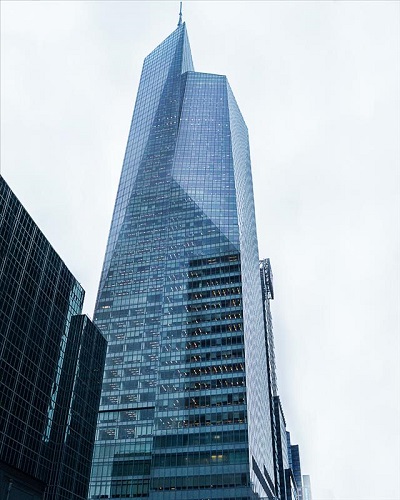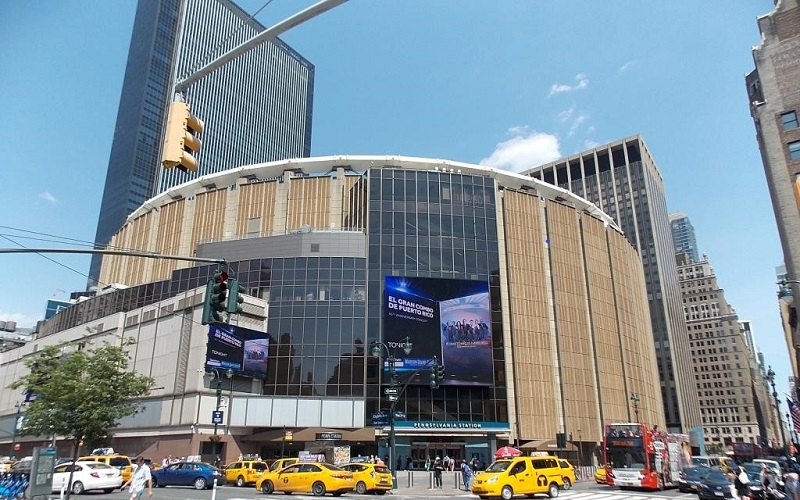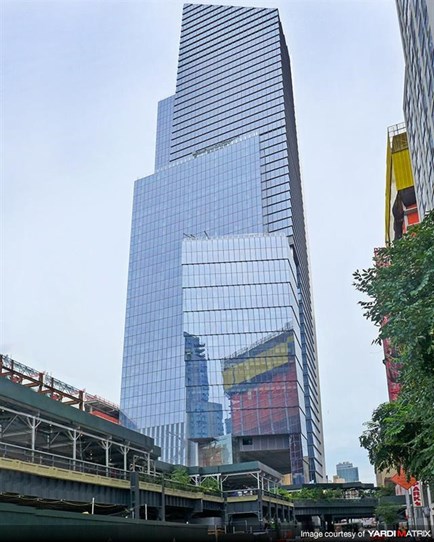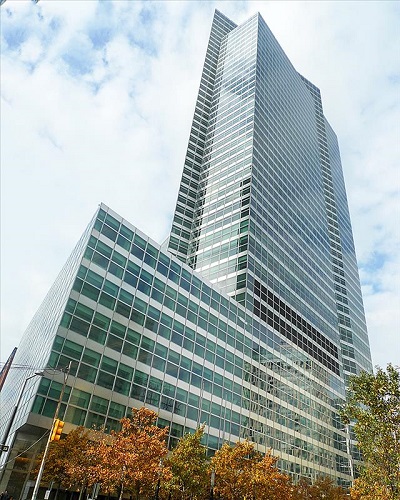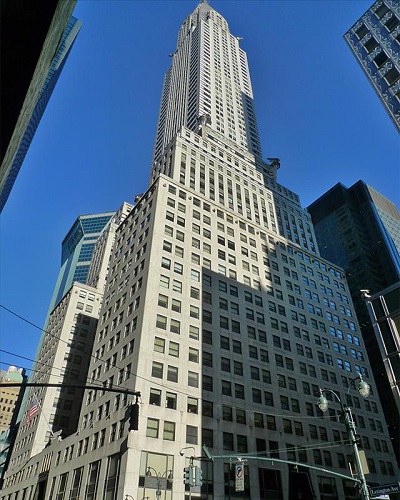A couple of months ago, we compiled a list of the top 100 taxpaying properties in the U.S. There was no shortage of iconic properties on that list, and yet, a number of landmarks were conspicuously absent (think the Chrysler Building, the Woolworth Building, or the One World Trade Center, to name a few). So we thought it’d be interesting to see which properties boast the highest tax exemptions in the U.S., and if we’d find any of those missing landmarks on that list.
With the help of in-depth PropertyShark data and some extra work combing through public records, we compiled a list of the top 20 tax-exempt properties in the U.S. Once again, the large majority of these properties are located in New York City, and yes, the Chrysler Building makes an appearance. However, we included in our analysis only privately-owned properties, in order to come up with a list of ‘true’ tax exemptions. Check out the full list below and scroll down for some juicy details on some of the contenders:
One Bryant Park – $74,098,132 in exemptions
The 55-story office tower at 1111 Avenue of the Americas in Manhattan boasts the highest tax exemption among all privately-owned buildings in the U.S. One Bryant Park is owned by The Durst Organization and is home to Bank of America’s global corporate and investment banking businesses, among other high-profile tenants. The Durst Organization was granted $650 million in triple tax-exempt Liberty Bonds to build its Midtown Manhattan property. Established to boost the local economy and encourage development in the wake of the 9/11 attacks, the Liberty Bond program was approved by Congress in 2002 and gave developers access to billions of dollars in tax-exempt financing. Properties financed through Liberty Bonds are not required to pay local, state or federal taxes, and One Bryant Park is one of them. Financing for the project was issued in four components, by the New York Liberty Development Corp., Second Priority Liberty Revenue Refunding Bonds, Series 2010, with Bank of New York Mellon as trustee, per Yardi Matrix data.
Barclays Center – $57,175,298 in exemptions
The second property on our list is Barclays Center, located at 620 Atlantic Ave. in Brooklyn. The famed multi-purpose arena, valued at $1.1 billion and home to the Brooklyn Nets, boasts $57 million in yearly tax exemptions. The story of Barclays Center started back in 2004, when Bruce Ratner of Forest City Ratner Cos. bought the Nets for $300 million and set on to build a new home for the team. After various delays and a major national financial crisis, the arena finally opened its doors in 2012. Yet the Barclays Center might have not been built if not for a favorable 2008 ruling by the IRS that granted New York sports teams use of tax-free bonds to build stadiums or arenas. Barclays Center was granted $511 million in tax-exempt PILOT Revenue Bonds, Series 2009, issued by the not-for-profit Brooklyn Arena Local Development Corp.
Barclays Center is currently owned by the Onexim Group, founded by Russian billionaire Mikhail Prokhorov. The Russian businessman gave up his position as president of Onexim in 2011, in order to pursue a political career. Prokhorov came out third in the 2012 Russian presidential election, losing to Vladimir Putin.
Madison Square Garden – $41,020,197 in exemptions
Home base for both the New York Rangers and the New York Knicks, the iconic Madison Square Garden opened in 1968 atop Pennsylvania Station and is the oldest major sports venue in the New York metro area. The Garden was granted tax exempt status under Section 429 of the real property tax law in 1982, under the condition that all Knicks and Rangers home games are to be held at the arena. The interesting part is that city lawyers unintentionally made the exemption a permanent one, and no appeals or initiatives have been able to change that so far. In 2014, The New York Times reported that the arena owned by Madison Square Garden Co. saved $350 million in taxes over the course of 32 years.
10 Hudson Yards – $38,844,049 in exemptions
The 52-story, 1.7 million-square-foot office tower at 501 West 30th St. in Manhattan’s Chelsea neighborhood reached completion in 2016, and boasts nearly $39 million in yearly tax exemptions. Owned by the Related Cos., the 10 Hudson Yards development is subject to a 30-year PILOT ground lease held by the New York City Industrial Development Agency, expiring in 2043, per Yardi Matrix data. The NYCIDA established the Uniform Tax Exemption Policy (UTEP), through which it can “grant benefits to certain commercial construction projects in the Hudson Yards area of Manhattan.” 10 Hudson Yards is home to high-profile tenants such as Coach, L’Oreal and the Boston Consulting Group. Coach actually purchased a 40% stake in the building for $530 million in 2013, while Allianz paid $420 million for a 44.3% slice of 10 Hudson Yards in 2016.
200 West Street – $31,549,727 in exemptions
As was the case with The Durst Organization’s One Bryant Park, Goldman Sachs also took advantage of the tax-exempt Liberty Bonds available to developers after the 9/11 attacks. The banking giant was granted $115 million in tax breaks and cash grants, and $1.65 billion in Liberty Bonds to cover part of the $2.1 billion construction cost of its Lower Manhattan headquarters at 200 West St. According to The New Yorker, in 2010, just one year after the project was finalized, Goldman Sachs announced it had made a profit of over $3 billion in the first quarter of the year alone–more than enough to have covered the full cost of the building without any tax incentives. Despite the controversies surrounding it, Goldman Sachs’s new headquarters managed to spur further development in Battery Park City and helped revitalize Lower Manhattan after 9/11.
The 2.1 million-square-foot, 43-story office tower is owned by Goldman Sachs Asset Management, and subject to a 64-year unsubordinated net ground lease held by the Battery Park City Authority. The lease is set to expire in 2069, per Yardi Matrix data.
The Chrysler Building – $21,876,702 in exemptions
The history of the Chrysler Building‘s tax-exempt status goes back to Cooper Union’s charter of 1859. The college, which owns the land under the landmark Manhattan tower, grants the property owner a tax break, as long as, according to the charter, “the above-mentioned and described premises, together with the appurtenances, and the rents, issues, income, and profits thereof, shall be forever devoted to the instruction and improvement of the inhabitants of the United States in practical science and art.” Consequently, the money that the building’s owner would normally pay on taxes is used to support the college. The Chrysler Building is currently owned by the Abu Dhabi Investment Authority, which acquired a 90% ownership stake in the property in 2008, for $800 million. The famed tower boasts a market value of $523 million.
Eight Non-Profit Hospitals Make the Top 20
Our top 20 list of tax-exempt properties in the U.S. includes eight major hospitals, four of them located within New York City and the other four in Ohio and Maryland. All the hospitals featured on our list are non-profit: in New York State, traditional hospitals are required to be non-profit by law, the exception being outpatient surgery centers. These centers are licensed by the state to replace traditional hospital operating rooms for conducting minor procedures, according to The New York Times.
The Buckeye State makes the list thrice, with the Cleveland Clinic and the University Hospitals Cleveland Medical Center in Cleveland, and the Riverside Methodist Hospital in Columbus. Located at 9500 Euclid Ave., the Cleveland Clinic is owned by the Cleveland Clinic Foundation, a non-profit corporation established in 1921, and boasts $29.4 million in tax exemptions. The Riverside Methodist Hospital is located at 3535 Olentangy River Road in Columbus, Ohio, and occupies the 17th spot on our list, with $18 million in exemptions.
Other hospitals featured in the top 20 include the NewYork-Presbyterian/Columbia University Medical Center, the NewYork-Presbyterian/Weill Cornell Medical Center and the Mount Sinai West Hospital in Manhattan; the Long Island Jewish Medical Center in Queens; and the Johns Hopkins Hospital in Baltimore. The Cleveland Clinic and the Johns Hopkins Hospital were recently ranked second- and third-best hospitals in the country by U.S. News & World Report. New York-Presbyterian and Mount Sinai are also featured on the list, while the Mayo Clinic in Minnesota was crowned the best hospital in the publication’s 2017-18 ranking.
Methodology
- Data sources: PropertyShark, proprietary research;
- Tax exemption values were established once a list of most expensive market values was extracted;
- Tax values were verified with Assessor and Tax Treasurer official public websites;
- Search was based on individual parcels;
- Results which could not be publicly checked were not included;
- The ownership section includes only non-governmental entities;
- Tax exemptions represent the 2017 fiscal year values.


